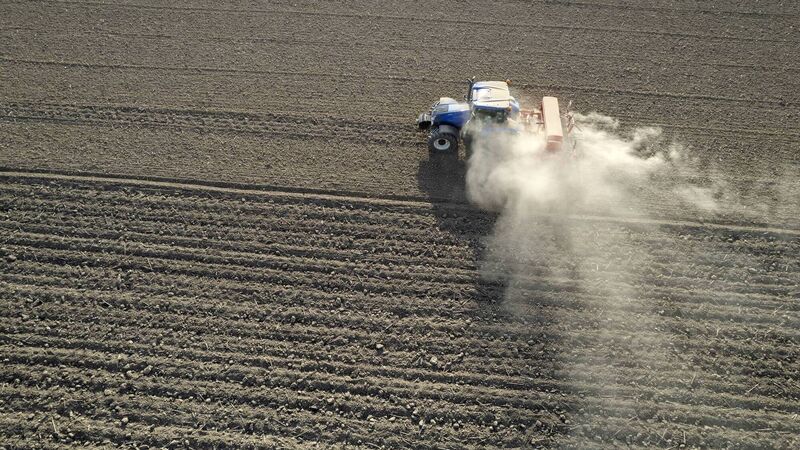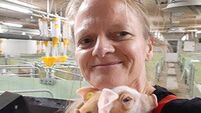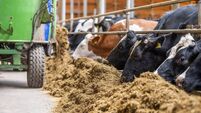Soil fertility actions continue after fertiliser deadline

Ground limestone can be applied all year round.
There are still important soil fertility actions long after the chemical fertiliser spreading deadline, according to Teagasc Tirlán Joint Programme co-ordinator Seamus Kearney on a recent Dairy Edge podcast.
Ground limestone can be applied all year round.
“Lime is magic. Getting it out there, you’re getting free nitrogen and phosphorus from the soil and literally, for every €1 you spend on lime, you’re getting a €7 return on a dairy farm,” Seamus said.
“Only a quarter of soils on dairy farms are optimal for lime, P and K,” he continued. “Nationally, 60% of dairy land is fairly good on lime, 40% is lacking; 60% is good on P, 40% is lacking; and 60% is fairly good on K, with 40% lacking.”
“Where soils are very deficient, below 6 and heading towards 5.5 pH, getting them back up to 6.2 pH can release up to 70kg of nitrogen/ha/year. That’s actually as much, if not more, than the reduction in chemical nitrogen allowed over the last 10 years. By getting lime out, you’re unlocking free nitrogen and also releasing background phosphorus,” Seamus explained.
“Where lime, P and K are low on farms, you might only get a third of the response from nitrogen applied. By correcting lime, P and K, you could get 65–70% return from the nitrogen applied.” Buying lime also reduces tax exposure, he said, on top of its strong value for soil fertility.
“In the 1980s, we were using about two million tonnes of lime per year. Now we’re struggling to hit one million. Back then, we spread a load of lime for every 60 dairy cows,” he said.
As an experiment in 2021–2022, Teagasc sent clients a text reminder about the value of lime when fertiliser costs soared.
“In those two years, we hit the highest lime usage in 40 years,” he said. Since then, applications have diminished again. Dairy farmers should be spreading at least two loads of lime for every 120 cows milked, he advised.
Dry stock farms also see a strong return on investment. “Every day is an opportunity to spread lime,” Seamus said. He recommended 1.5–2t/acre of lime on land with sub-optimal pH.
After the fertiliser deadline, potash can also still be spread. “We can spread straight K compounds like muriate of potash, which is 50% K,” he explained.
“It’s probably the most lacking element on many farms. Silage ground in particular is often deficient. A first cut removes 100 units of K/acre, while 2,000 gallons of slurry puts about 60 back, leaving a deficit of 40. Soil sampling is key to identifying which fields are low.”
A bag of muriate of potash/acre applied each year for four years will raise soil K by one index.
“On the back of that, you’ll probably grow 4–5% more grass,” Seamus said. “If a part of the farm is low in K, give it a bag of muriate of potash per acre, ideally in September or October. If left too late, it can leach. And don’t spread it in the spring to avoid the risk of grass tetany.”
Seamus highlighted that a fertiliser programme combining NBPT-protected urea, 18-6-12, and muriate of potash is environmentally friendly and €20/cow cheaper at current prices. For a 100-cow herd, that’s a saving of €2,000.













